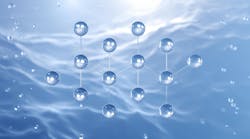Upon arriving at the Southwest Membrane Operator Assn.’s 2010 symposium held in February in beautiful Carefree, Ariz., the theme of the event—water conservation—quickly presented itself to me. A brochure in my hotel room explained that the resort had already installed water-efficient showerheads and low-flow toilets, but still strongly urged hotel patrons to conserve even more.
Arizona is in the midst of a serious nine-year drought, as are its neighboring states of California and Nevada. The average flow of the Colorado River is its lowest in 100 years, and Lake Mead is only at 45% of its capacity.
The water conservation theme manifested itself further. Scottsdale Mayor Jim Lane kicked off the conference by talking about the city’s advanced knowledge and use of membranes for water treatment due to its historically low water supply. He also stressed the area’s “concern for sustainability of our water supply and the need to recharge it continually going forward.” Lane is a member of the Arizona Municipal Water Users Assn., a group that focuses on water conservation methods and the addition of new water supplies to the area. For a mayor of a large city, Lane’s participation in and knowledge of water issues is impressive; yet it also shows the urgency of the matter here.
Keynote speaker Jennifer McCloskey from the U.S. Bureau of Reclamation then spoke about the new Yuma Desalting Plant in Yuma, Ariz. The goal of the 72-million-gal-per-day plant will be to desalinate a bypass flow from the Colorado River with the intent to recover every gallon of desalted water back into the river. The Yuma plant will begin pilot testing in May 2010, but it already shows an encouraging glimpse into the future. Membranes, as we already know, provide high-quality effluent and reduce plant footprint, but can they improve our “water footprint” in general? Exactly how do membranes and water conservation intersect?
Membranes allow desalination to happen, and it is being considered more each day around the U.S. In places like the Southwest, available freshwater supplies are scarce and brackish water is prevalent. Desalination will have to become a real, viable option. In this case, the goal at hand may not be the actual conserving of water so much as seeking out new water supply and developing technology to “make” new potable water.
As advocates of the membrane industry and water industry in general, we’d like the Yuma project and others like it to succeed. The reality is, though, that we need these projects to succeed.

